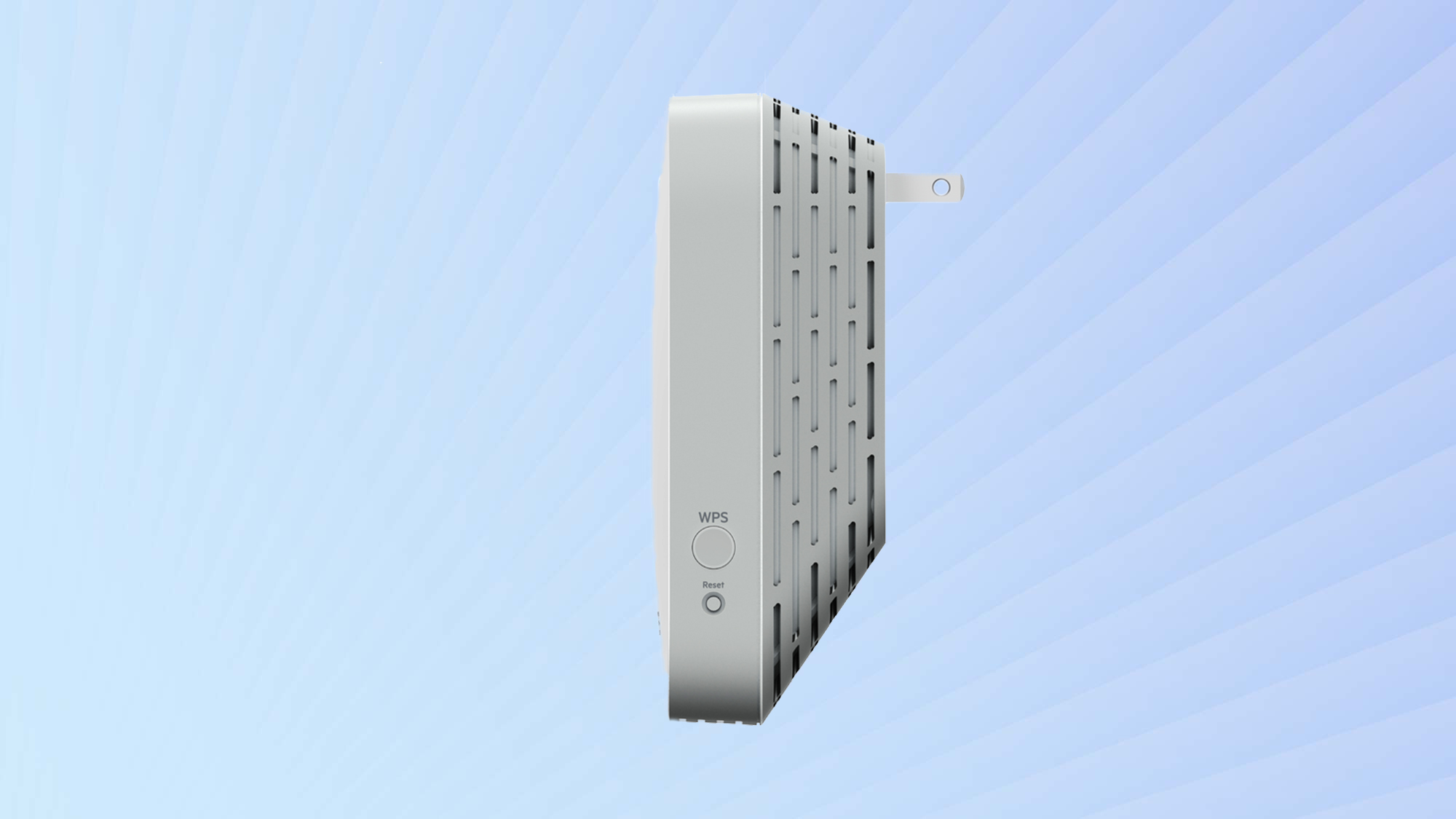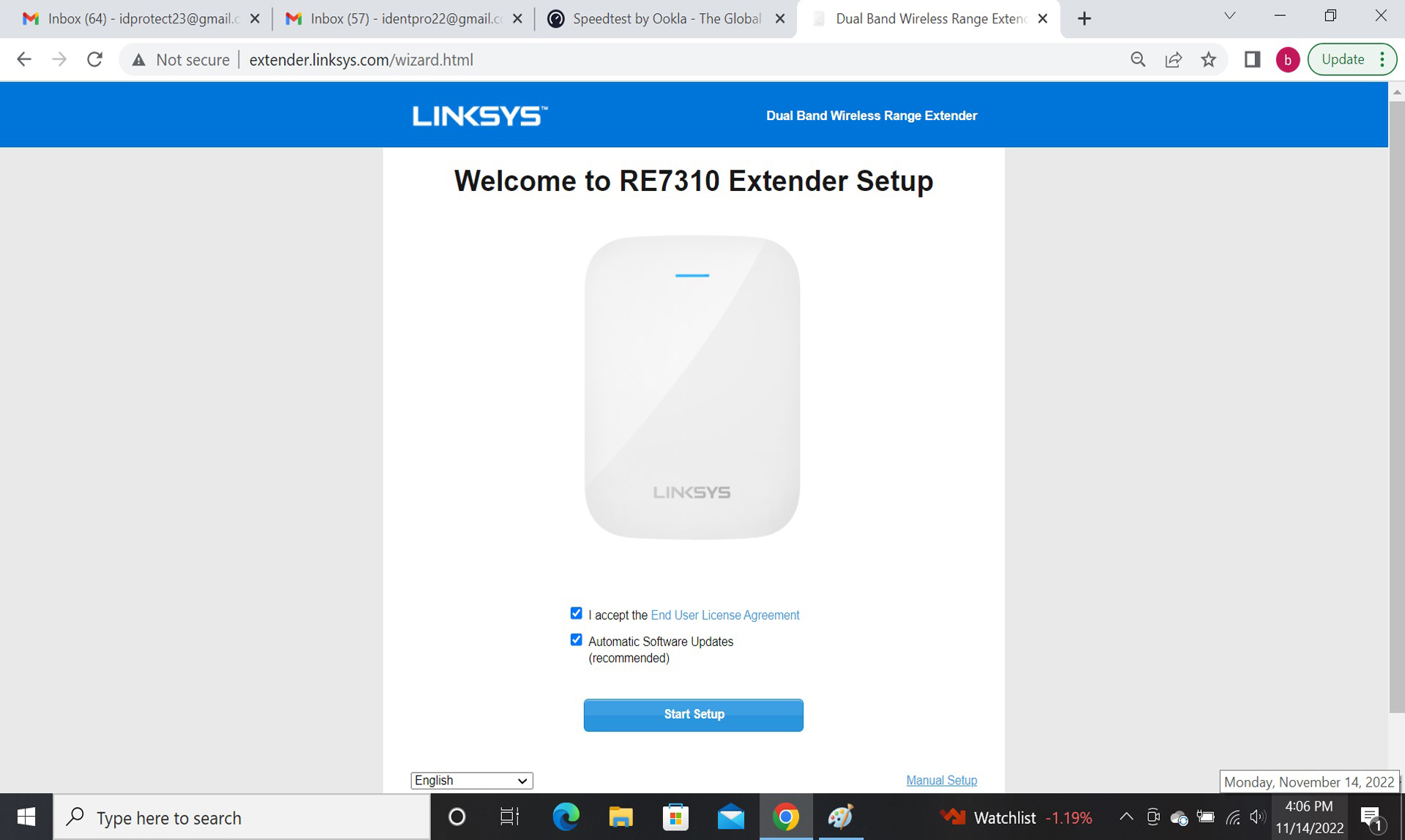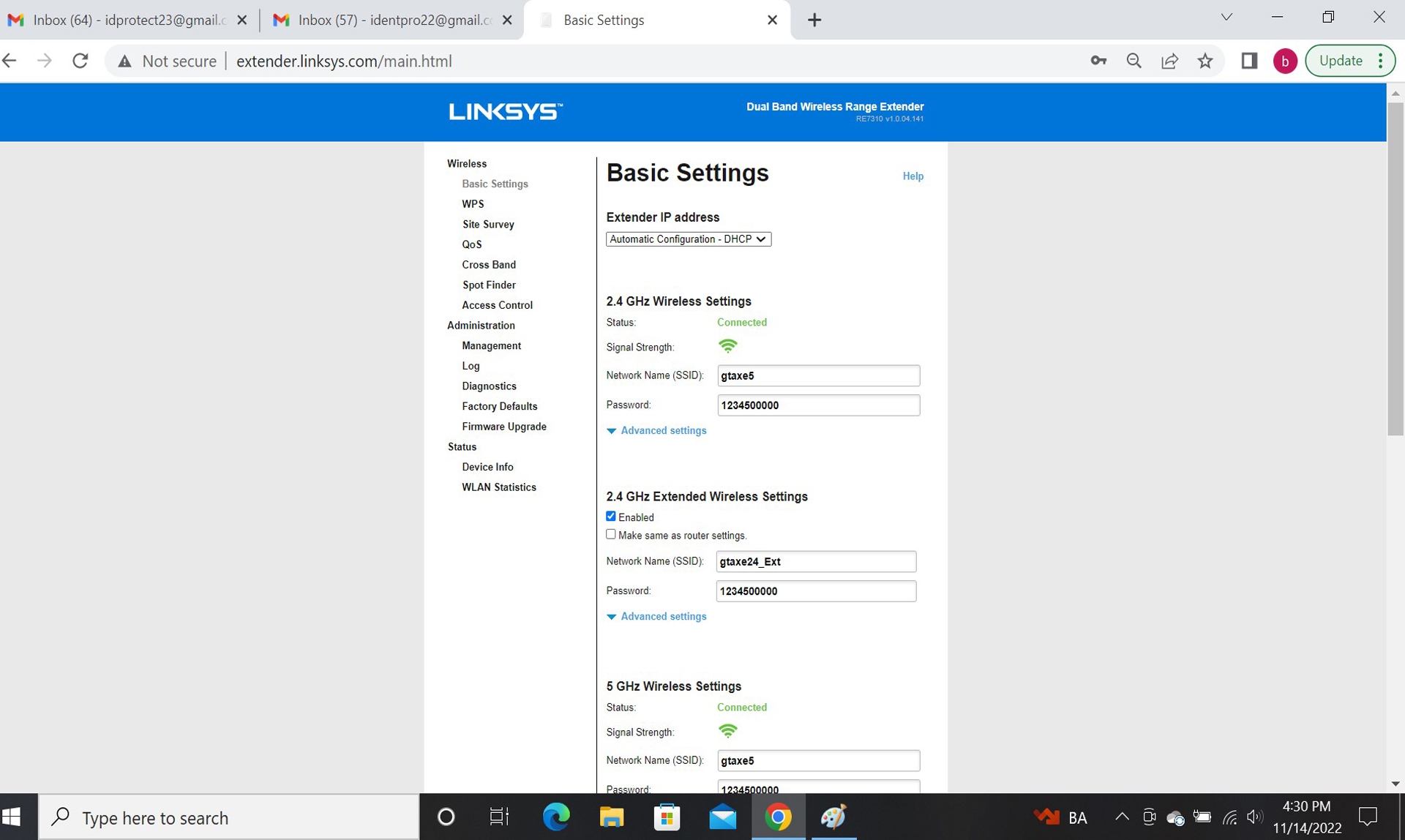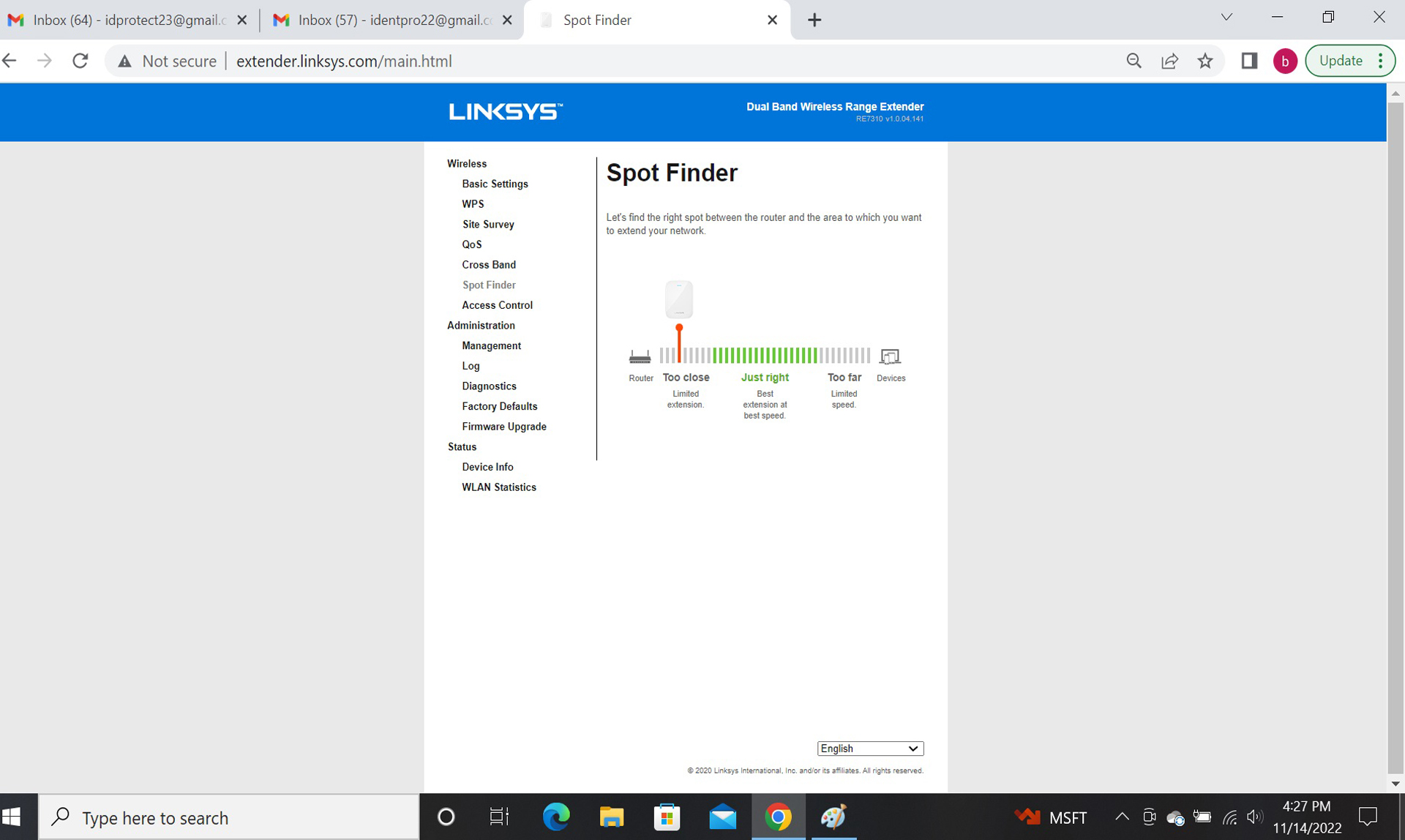Tom's Guide Verdict
It may not be the smallest or more powerful Wi-Fi extender, but the Linksys RE7310 is a snap to set up and easily fills Wi-Fi dead zones with data.
Pros
- +
Good performance
- +
Dual-band operations
- +
Spot Finder technology
Cons
- -
Big and expensive
- -
Lacks ports for networking or attaching a storage drive
- -
No app
Why you can trust Tom's Guide
Wi-Fi Spec: AX1800
Number of Antennas/Removable: 2/No
Ports: None
Peak 802.11ax performance: 322.4Mbps (10 feet from extender)
Range: 100 feet
Size: 5.2 x 3.9 x 1.8 inches
Estimated Annual Electricity Cost: $7.90
Big, expensive and lacking an Ethernet port for turning it into a wired access point, the Linskys RE7310 was easy to install and moved lots of data. Its Spot Finder technology made sure it was set up in its sweet spot, but it lacks a start-up and configuration app. Still, it’s a great way to eliminate Wi-Fi dead zones by extending your home network.
Our Linskys RE7310 review will help you decide if this is the best Wi-Fi extender for your needs or if you’d be better off with something smaller and less expensive.
Linksys RE7310 review: Pricing and availability
At $120, the Linksys RE7310 is among the most expensive plug-in Wi-Fi extenders available. It’s designed to add coverage for up to 2,000 square feet per unit, according to the company’s engineers.
Linksys RE7310 review: Design
The Linksys RE7310 extender is a big device that plugs directly into an AC outlet with a two-prong plug. At 5.2 x 3.9 x 1.8 inches, it’s roughly twice the size of the diminutive D-Link E15.

All white, the RE7310 has two antennas that are hidden inside its case. In other words, there’s nothing to extend its length or make the antennas even minimally aimable.
The extender has a single LED bar near the top that signals what the device is up to. It’s blue when everything is OK. Unlike many other Wi-Fi extenders, it lacks a way to turn this light off.
Linksys RE7310 review: Performance
The RE7310 proved to be an excellent way to extend a network in my 100-year old home. Its blue led was on, showing it had a good connection with my Asus GT-AXE-11000 router and was able to move emails, play 4K videos and stream music on an iPad Pro.
Get instant access to breaking news, the hottest reviews, great deals and helpful tips.
As far as performance goes, the RE7310 was top shelf. It was able to move upwards of 322.4Mbps when the extender was 40-feet from the router and the Samsung Galaxy Book Pro test system was another 10 feet from the extender. This is six times the E15’s throughput and close to the Nighthawk EAX80’s class-leading 358.0Mbps. Still, it was well off the peak performance of the TP-Link RE705X at 528.0Mbps.
With the Galaxy Book Pro 40-feet from the extender, the throughput dropped to 120.9Mbps, plenty for most tasks but less than half of the RE705X’s 248.1Mbps. With the receiving system in an upstairs bedroom, 145.1Mbps was delivered, making the RE7310 a middle of the pack performer. It has a 100-foot range.
As opposed to the E15, the RE7310 lacks a power-saving sleep mode when it isn’t being used. At a draw of 6.0 watts, it is among the most power hungry, although nothing compared to the Netgear Nighthawk EAX80’s 8.3 watts. All told, it adds up to an estimated annual power bill of about $7.90 if you pay the national average of 15 cents per kilowatt hour of electricity.
During my two-week evaluation, it got more than warm to the touch but nothing like the E15’s 115-degree Fahrenheit surface temperature. It was closer to 104 degrees.
Linksys RE7310 review: Features
The RE7310 can connect with up to 20 clients at once, effectively extending a Wi-Fi network into previously unserved areas. It takes in the host network’s weak signal, amplifies it and retransmits it using the latest Wi-Fi 6 technology with MU-MIMO, beamforming and 1024 QAM modulation. However, it lacks compatibility with the 6GHz band that Wi-Fi 6e offers.
A dual-band extender, the RE7310 uses 2X2 streams in each band to extend a network. It can move up to 600Mbps over the 2.4GHz band and 1.2Gbps over the 5GHz band and has an AX1800 throughput rating. On the other hand, it lacks the AI dynamic adjustments and load balancing that drives the D-Link E15 extender.

Without either a USB or Ethernet wired networking port, the RE7310 can’t make a storage drive’s contents available throughout the extended network or work as a wired access point. The much larger Nighthawk EAX80 can do both. The RE7310 lacks an On/Off switch but has buttons on the side for using WPS to quickly connect and a reset key.
Linksys RE7310 review: Setup and software
Connecting the RE7310 to my network started with plugging the device into an AC outlet about 40 feet from my Asus GT-AXE11000 gaming router. There’s no app for setting it up, so I used the Chrome browser with my Samsung Galaxy Book Pro notebook and typed “extender.linksys.com” into the address bar to start the process.
In addition to QoS (Quality of Service), the interface has a site survey to help properly place the extender. The Spot Finder is a bonus that can help get the distance between the router and extender just right.
Once connected, I clicked Start Setup and then selected the host network to extend and entered the password. The set up finished off with me entering a new administrator password and a hint.
I registered the device using an email address and declined the offer to have Linksys send me marketing material. A summary page showed the configuration and it’s worth printing out for emergencies. Start to finish, it took a little over four minutes to set up, making it one of the fastest to fill in gaps in a home network.
To change its settings, I needed to log in again and click on “Access range extender settings.” The section showed the 2.4- and 5GHz settings but I needed to zoom the browser to 67 percent to take it all in. At the bottom is a way to remotely restart the extender if it’s connected.
In addition to QoS (Quality of Service), the interface has a site survey to help properly place the extender. The Spot Finder is a bonus that can help get the distance between the router and extender just right. There are statistics but nothing like the D-Link E15’s graphs to show the numbers visually.
The interface lacks the ability to turn the extender’s LED light off or set up a schedule for when it operates. This is something that the Nighthawk EAX80 can do.
Linksys RE7310 review: Warranty and support
Linksys stands by the RE7310 with a one-year warranty and lifetime support. That’s better than Netgear and D-Link’s very limited support and Tenda’s three-year warranty.
In addition to an extensive FAQ section on Linskys’s support site, there is a reasonably complete manual for the RE7310. The items offered don’t include a video for newbies to set up the extender though.
Linksys RE7310 review: Verdict
One of the best ways to fill Wi-Fi dead zones with data, the Linksys RE7310 may not be the smallest, fastest or cheapest extender but it impresses with good all-around performance and an excellent way to get its all-important placement just right. On the downside, there’s neither a setup app nor any ports. However, as a plug-in extender, the RE7310 excels.
Brian Nadel is a freelance writer and editor who specializes in technology reporting and reviewing. He works out of the suburban New York City area and has covered topics from nuclear power plants and Wi-Fi routers to cars and tablets. The former editor-in-chief of Mobile Computing and Communications, Nadel is the recipient of the TransPacific Writing Award.







